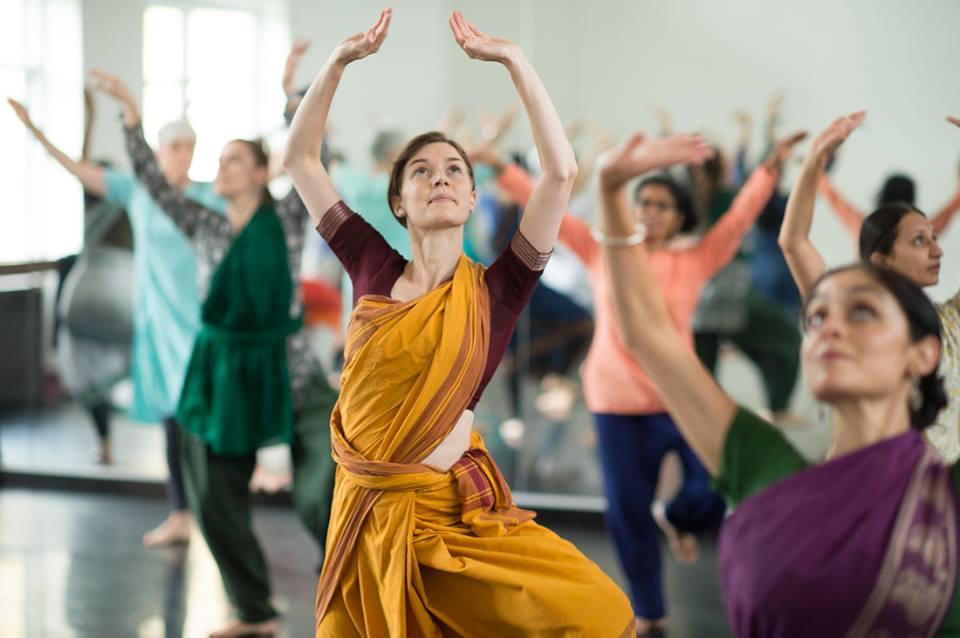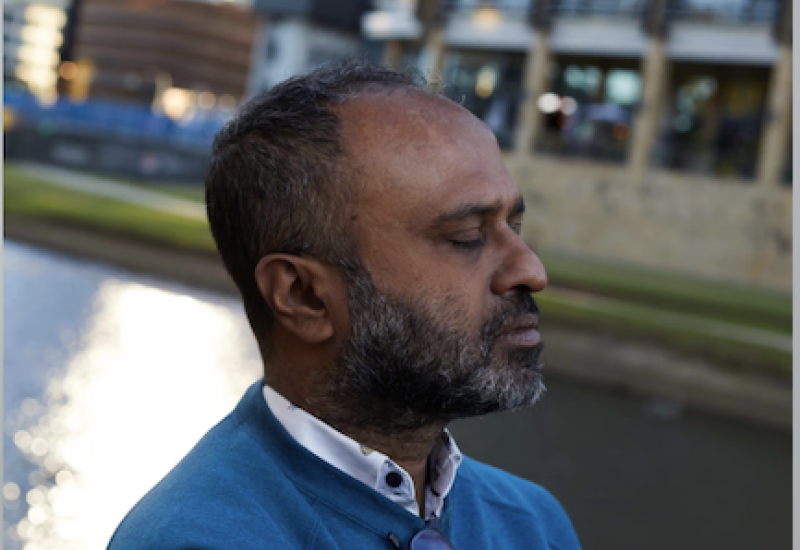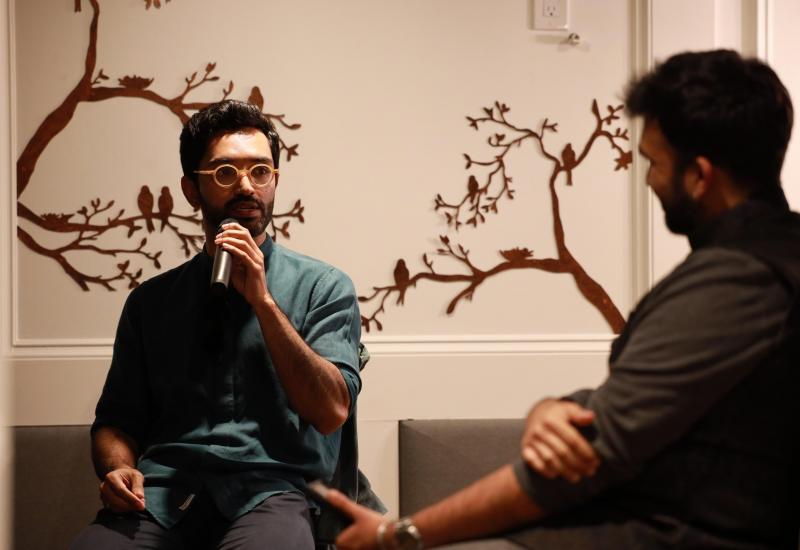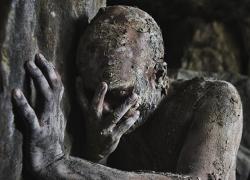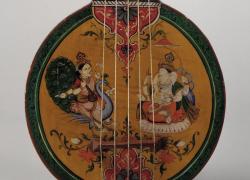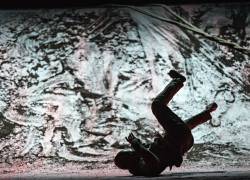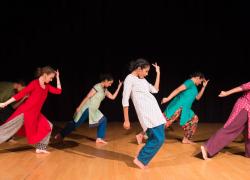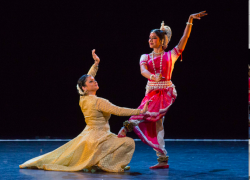Not Appropriation...
Alain de Botton in The Art of Travel suggests that we are attracted to foreign cultures not because of their exotic content but because they express some aspect of one’s innermost yearnings – ‘what we find exotic abroad may be what we hunger for in vain at home…’.
We are fortunate to be living at a time and in a place when artists can discover and pursue art forms not necessarily related to their own background or culture. One can be drawn to a form, to the wider appeal of a culture, or to the technical aspects of an art.
We asked four dancers and musicians based in the UK about their experiences. Their responses remind us that when we watch a performance, we can’t make assumptions about who people are, or why they do what they do.
KATIE RYAN, odissi dancer/choreographer, who first encountered odissi in Bedford when she was at school.
Has it been harder for you as a non-South-Asian to familiarise yourself with the culture and practice that underpins your art?
I'm not entirely sure, as I don't have an alternative experience to compare with, but I suppose there is less direct access to information and experience of South Asian culture for someone not brought up within that culture. Having said that, I feel very fortunate to have grown up in a multicultural community within which I have been exposed to aspects of many cultures. I have also had the opportunity to travel, which has been very enriching.
How have you set about becoming comfortable in that culture?
I wouldn't say I've made many conscious decisions to try to become comfortable within a South Asian culture, although learning about aspects of that culture relevant to my dance practice may have contributed. In many ways I will always be an outsider and in others I have always felt quite at home. Having attended Indian dance classes of various styles since I was around five years old and made friends with people of South Asian backgrounds inside and outside dance class, there are many aspects of the culture I have grown up with and therefore feel naturally familiar with.
Have you encountered any resistance?
I'm commonly asked how or why I became engaged with odissi dance, and sometimes have the impression people are a bit disappointed that my response is as simple as: I had the opportunity to attend classes run by an odissi teacher at my primary school, enjoyed it, continued, and gradually developed a life-long love for the form. However, I can't say I have encountered any resistance to pursuing my interest in South Asian culture in general, or odissi in particular. On the contrary, people of South Asian backgrounds are generally very positive and supportive of my interest in their culture, something I am very grateful for.
MAGDALEN GORRINGE, bharatanatyam dancer
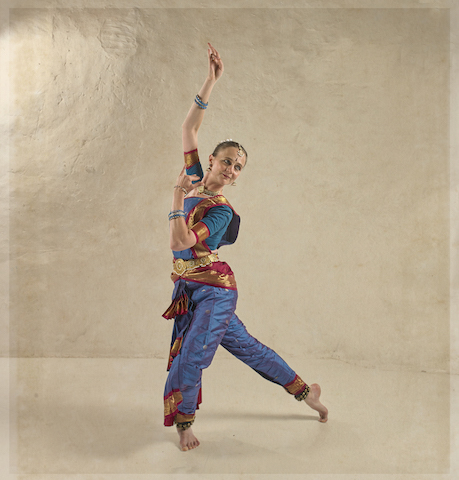
I think that my experience as a non South Asian dancer is slightly different from that of many other non Asian practitioners of Indian dance, in that I grew up in India (in Madurai, Tamilnadu). Tamil culture was therefore a pretty formative and important influence during my childhood, and I absorbed it side by side with the culture of my immediate family, which is a culture that values English literature (particularly Shakespeare) as well as English folk song and dance traditions. My family is Christian – however I have always been encouraged to engage with and learn from other faiths – so my going to the temple, or portraying dances about gods or goddesses from the Hindu tradition has never been an issue. Having said this, a pilgrimage to Kedarnath and Badrinath I undertook with my then dance teacher helped me understand some of the depth of the devotion in serving a particular deity. We stayed some time in Haridwar where every day we went to an Ambal temple kept by two Tamil priests. The care and tenderness they showed in bathing, dressing and attending to the idol in the temple stays with me to this day, and made a big impression in terms of my understanding the Varnam ‘Swami naan unden Adimai’. Until I had immersed myself in temple life in this way I hadn't really understood what I was portraying in bathing the deity with water, then milk and so on. It helped that this temple was a small and peaceful place, with an atmosphere created by the simple and sincere devotion of the two priests, who were gentle and compassionate men. I do think that there are many ways to understand/enter into the bharatanatyam repertory however. Much of what is portrayed and explored goes beyond any cultural specificity, considering emotions that are universal – love, jealousy, pride, sorrow, anger.
In terms of resistance, I would say that I have met more resistance from white people who really have nothing to do with and no knowledge of bharatanatyam than I have from anywhere else. I danced once in a restaurant in Edinburgh, and had comments from the (white) audience advising me to 'dye my skin with tea-leaves' and the like. I think this has more with my not fitting into the oriental and exotic vision they would like the dance to represent. I encountered similar 'inverse racism' in Devon when I was told that my feet made a 'different sound' to that of my brown colleague. We laughed about this at the time – but actually I find this kind of Othering whereby someone's skin colour supposedly makes them substantially different (in either a positive or negative way!) very disturbing, as the romanticisation of the skills and qualities of someone due to their race can (I feel) easily slide into equally baseless demonisation.
JONATHAN MAYER, sitar player/composer
Was it harder for you as a non-South-Asian musician to familiarise yourself with the culture and practice that underpins your art?
No! My father learnt western violin in Calcutta and came from an Indian background (Anglo-Indian father & Tamil mother). He had to familiarise himself with a culture and practice alien to his upbringing and was able to become First Violinist in the London Philharmonic Orchestra. It is not harder, it is a matter of learning the phrasing & grammar of Indian music. Listening and absorbing oneself in the music helps to get the ‘feel’ of the genre but it is open to anyone to play and enjoy.
How have you set about becoming comfortable in that culture?
My father was Indian so for me it felt natural to explore my Indian heritage. I am very much English but my Indian side comes out in my music! I do a lot for many South Asian communities in the UK from Lagna Geet to Tagore. All of these communities have made me feel most welcome as they do when I play in Kolkata.
Have you encountered any resistance?
No… not really. A few comments… ‘Oh Jonathan? That’s not an Indian name? Why did you choose sitar?’ I explain that both my parents are/were musicians and that my father was born in Calcutta ‘… oh that’s where you get it from!!!’ Well, not really because my father understood Indian classical music very well and used it extensively in his compositions but he wasn’t a player of an Indian instrument. However he was a darn fine violinist and had to overcome many prejudices through his career in the 1950s to 2000s.
BERNHARD SCHIMPELSBERGER, British-Austrian percussionist/composer
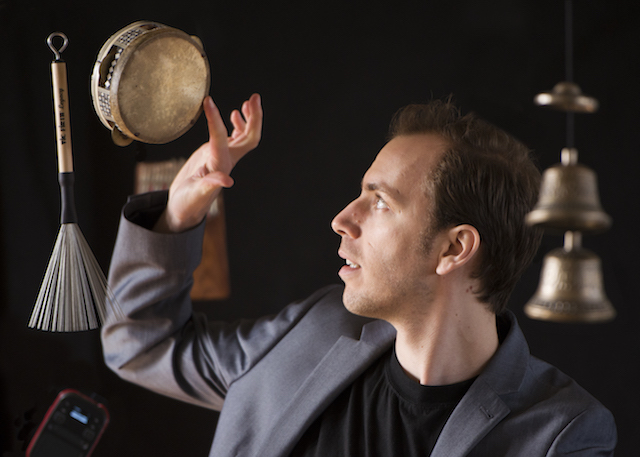
Is it harder for a non-South-Asian musician to familiarise himself with the culture and practice that underpins his art?
Definitely. When I visited India for the first time in 2002 it was a real culture shock; but a wonderful one. I was totally overwhelmed by the intricacy and the profoundness of this culture.
It was a slow and gradual process to learn more about the music and the culture. Without meeting the people you can not truly understand the art too.
The food, the climate, the languages… all these elements matter when it comes to experiencing and feeling the music.
How have you set about becoming comfortable in that culture?
I am very lucky to have a guru. My master is Pandit Suresh Talwalkar, one of the greatest and last practicing tabla gurus in India. Through his training in music I was fortunate to travel with him and be accepted into an Indian world. I was treated like a local and that really helped me to become more comfortable.
The most important aspect though was learning in the ‘Guru-Shishya Parampara’ style. This is the ancient way of teaching music. By accepting this I dived into a more traditional world which informs the way I look at the world today.
Have you encountered any resistance?
Most of it was in my mind !
Crossing over is a hard process. There are many doubts and worries that you place upon yourself, with a fear of losing your own culture and not doing justice to the musical tradition you were brought up with. It is a big learning process that still continues to this day.
In India itself I found a lot of hospitality and love. People really appreciate the effort that one makes when learning traditional music. There was a lot of support.
PERFORMANCES COMING UP
Katie Ryan’s ‘Sacred Shapes/Sacred Fire’ will be performed by the Odissi Ensemble as part of the Dashehra Diwali Mela in Manchester on 20 October 2018.
Jonathan Mayer will be performing on 20th October 2018 at the World Premiere of Dhammapada, Watermans Arts Centre, London, and on 10th November with Yousuf Ali Khan on tabla at the Kobi Nazrul Centre, London.
Bernhard Schimpelsberger will be playing with Agudo Dance Company in Silk Road at The Place, London, on 26 & 27 October.

